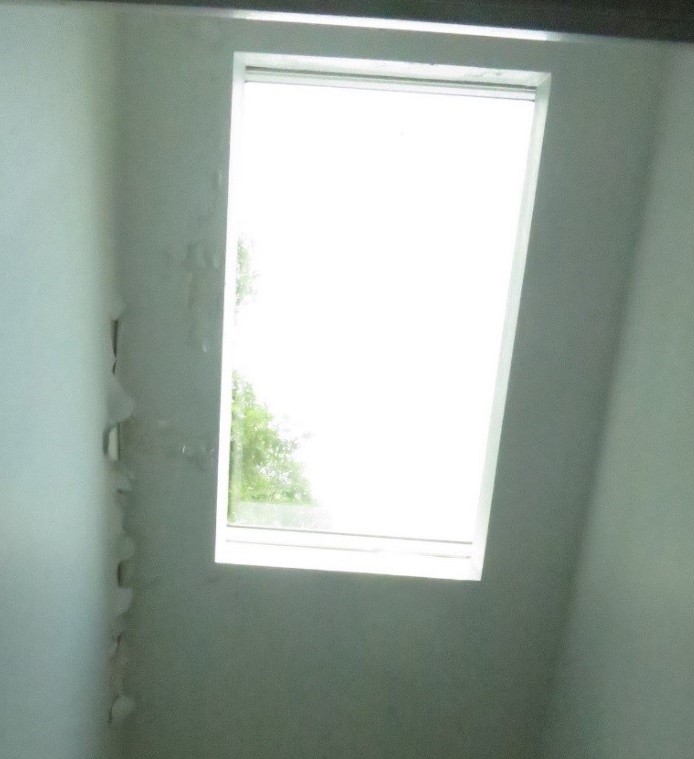Especially as your home ages a bit.
Roof leak wall meets slop below skylight.
The laps on the roof sheets get flooded when excessive water fill the corrugations and overflow under the laps.
No matter how well your skylights were installed it is still possible for them to leak during heavy rains.
During installation each skylight essentially creates a big hole in an otherwise uniform roof surface.
If your leak is coming through at the lower level you may have exterior below grade issues.
The roof sheeting manufacturers state that the minimum slope is 5 degrees.
Skylight leaks in heavy rain are a common source for roof leaks.
And in our experience when a single piece of flashing extends only a few inches under the shingles especially on a long roof slope and worse on a roof that happens to slope slightly towards rather than away from the abutting vertical building wall the accumulated roof drainage water near the bottom end of the roof wall intersection will overwhelm the width of the flashing and because it is not directed back out on top of successive shingle courses it leaks into the building or building.
Leaks at skylights left unattended can lead to costly structural damage rotted roof sheathing rotted roof framing and wet moldy insulation as well.
As each row of shingles is laid a step flashing is installed over the shingle next to the wall.
Part of the flashing turns up on the wall and the other portion gets covered by the next row of shingles.
Build a corrugated roof flatter than 5 degrees it is quite common and it will overflow during heavy rain.
Sloped glazing such as roof skylights probably has historically had more leaks into the roof structure due to improper roof flashing than other window failure causes.
You find these flashings where a roof climbs alongside a vertical wall.

